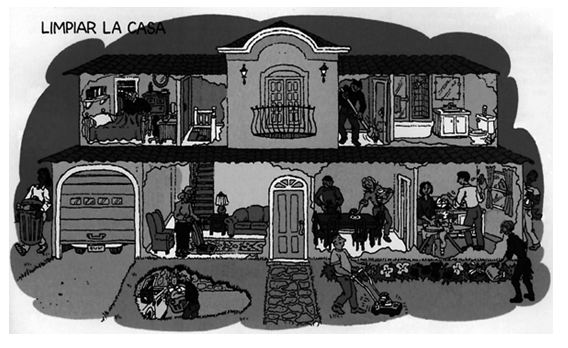You will hear two people greet each other. Listen to their conversation and then complete the sentences based on what you hear
1. La conversación es. . . (a) formal. (b) informal.
2. Miguel está. . . (a) bien. (b) muy bien. (c) regular.
3. El profesor Pérez está. . . (a) bien. (b) muy bien. (c) regular.
4. La conversación ocurre (happens). . . (a) por la mañana. (b) por la tarde. (c) por la noche.
1. a. formal
2. b. muy bien.
3. a. bien.
4. b. por la tarde.
You might also like to view...
Answer the oral question, using complete sentence.
¿Qué hace usted para proteger el medio ambiente?
Jorge is describing his house and what’s going on there at the moment. Read each of his statements and decide whether it is a) cierto or b) falso according to the drawing.

____1. Mi casa tiene dos pisos y un sótano.
____2. El cuarto de baño está encima de la sala.
____3. Mi hermana saca la basura.
____4. Mi mamá pasa la aspiradora en su habitación.
____5. Riego las flores detrás de la casa.
____6. La escalera está en el salón.
____7. Hay una bañera en el cuarto de baño.
____8. Mi tía plancha en la cocina.
____9. El comedor está entre el garaje y el salón.
____10. Mi primo limpia las ventanas.
At what point did you realize that this story was not what it seemed? Whatspecific moments in the text first revealed that Le Guin had turned things upsidedown?
What will be an ideal response?
Other than with transitional words, sentences can be linked by repeating
_____________ and _______________. Fill in the blank(s) with correct word